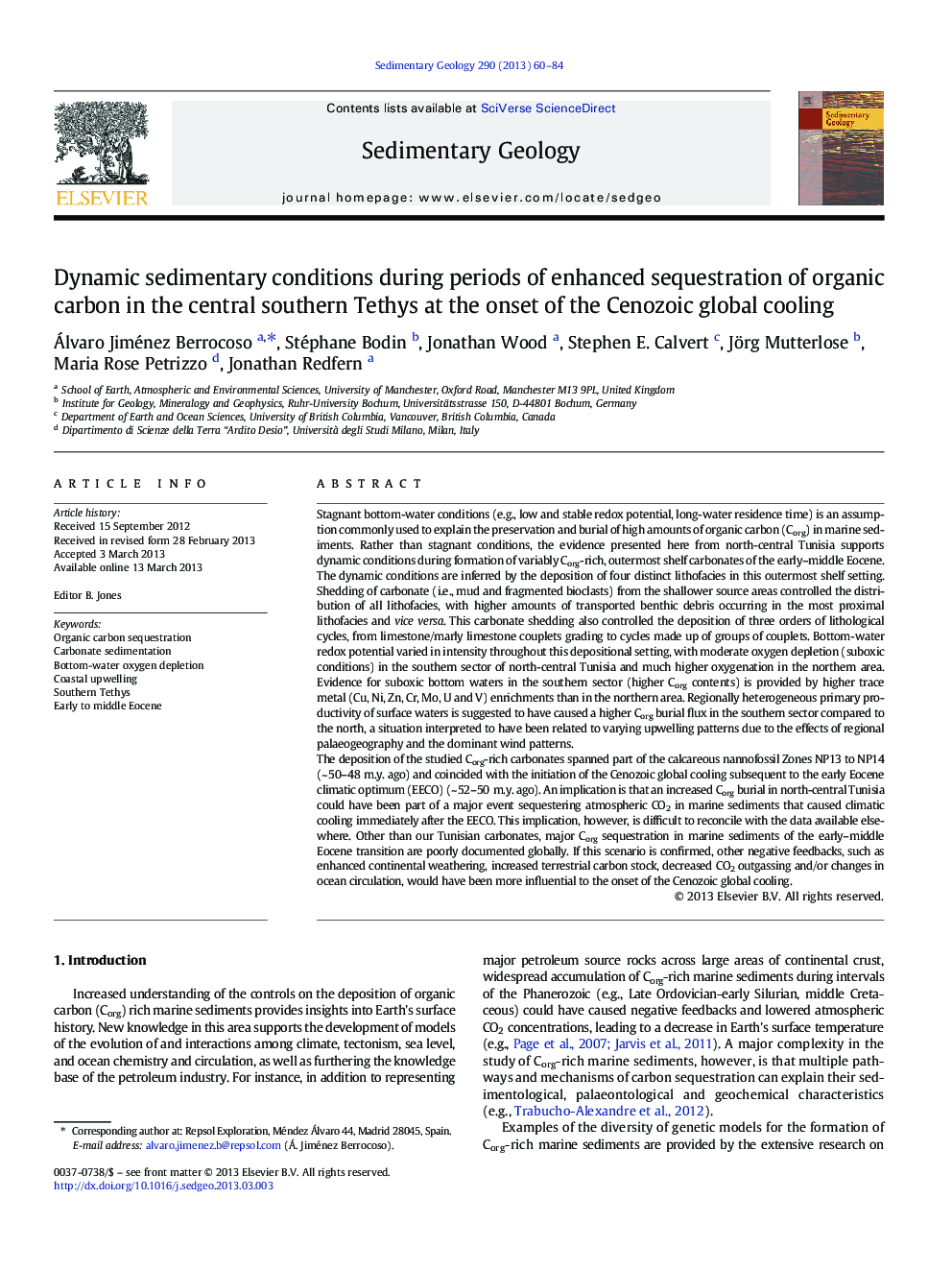| Article ID | Journal | Published Year | Pages | File Type |
|---|---|---|---|---|
| 4689547 | Sedimentary Geology | 2013 | 25 Pages |
Abstract
The deposition of the studied Corg-rich carbonates spanned part of the calcareous nannofossil Zones NP13 to NP14 (~Â 50-48Â m.y. ago) and coincided with the initiation of the Cenozoic global cooling subsequent to the early Eocene climatic optimum (EECO) (~Â 52-50Â m.y. ago). An implication is that an increased Corg burial in north-central Tunisia could have been part of a major event sequestering atmospheric CO2 in marine sediments that caused climatic cooling immediately after the EECO. This implication, however, is difficult to reconcile with the data available elsewhere. Other than our Tunisian carbonates, major Corg sequestration in marine sediments of the early-middle Eocene transition are poorly documented globally. If this scenario is confirmed, other negative feedbacks, such as enhanced continental weathering, increased terrestrial carbon stock, decreased CO2 outgassing and/or changes in ocean circulation, would have been more influential to the onset of the Cenozoic global cooling.
Related Topics
Physical Sciences and Engineering
Earth and Planetary Sciences
Earth-Surface Processes
Authors
Álvaro Jiménez Berrocoso, Stéphane Bodin, Jonathan Wood, Stephen E. Calvert, Jörg Mutterlose, Maria Rose Petrizzo, Jonathan Redfern,
